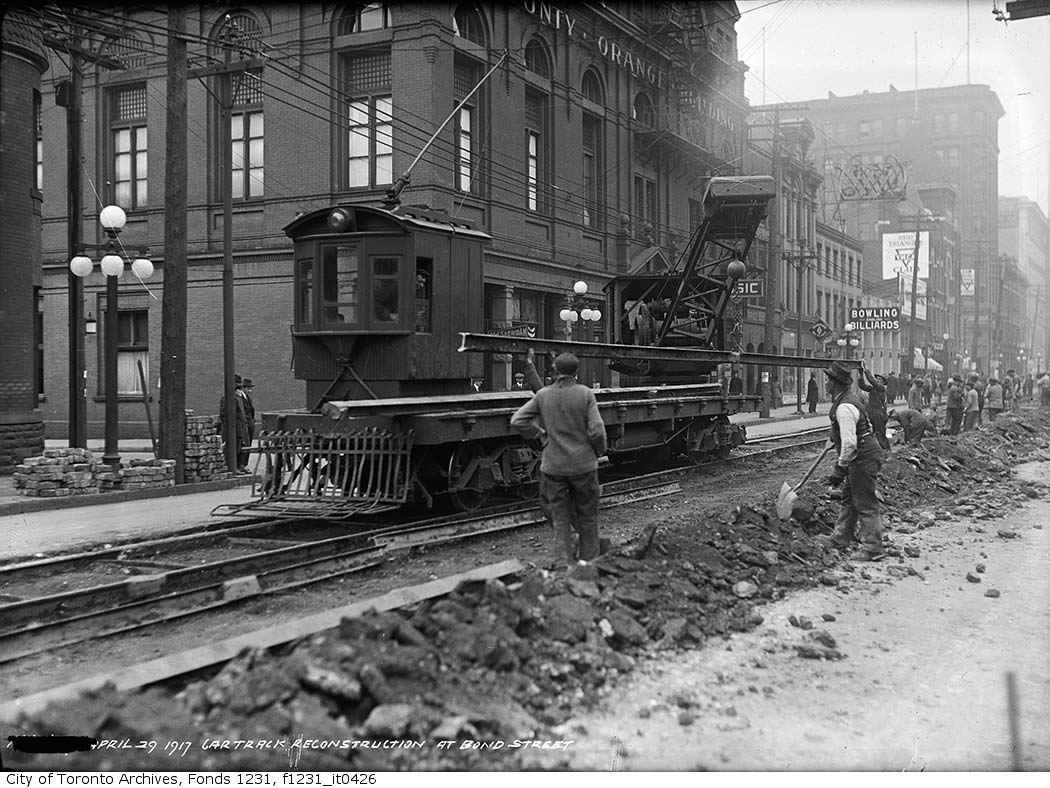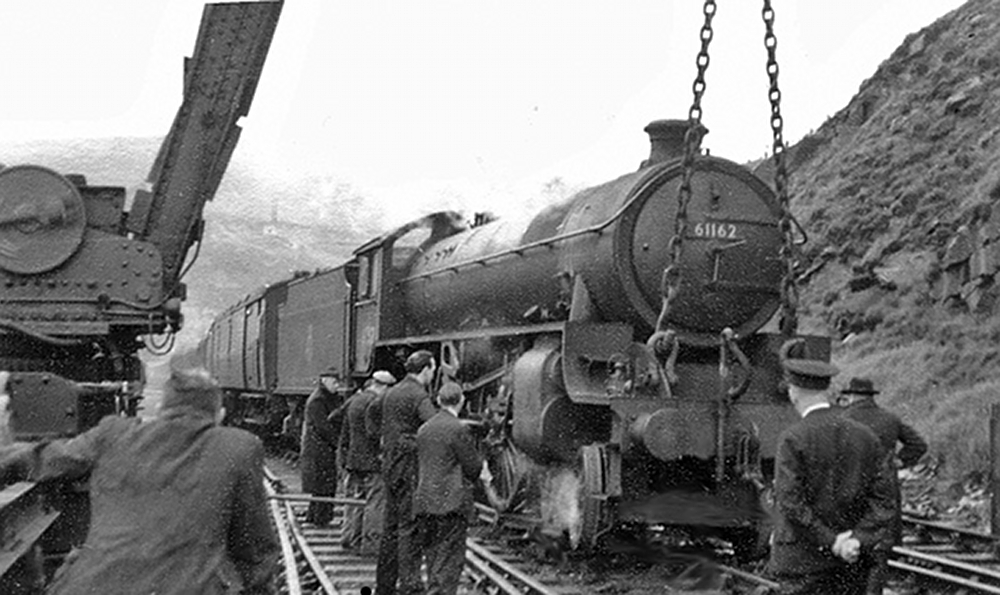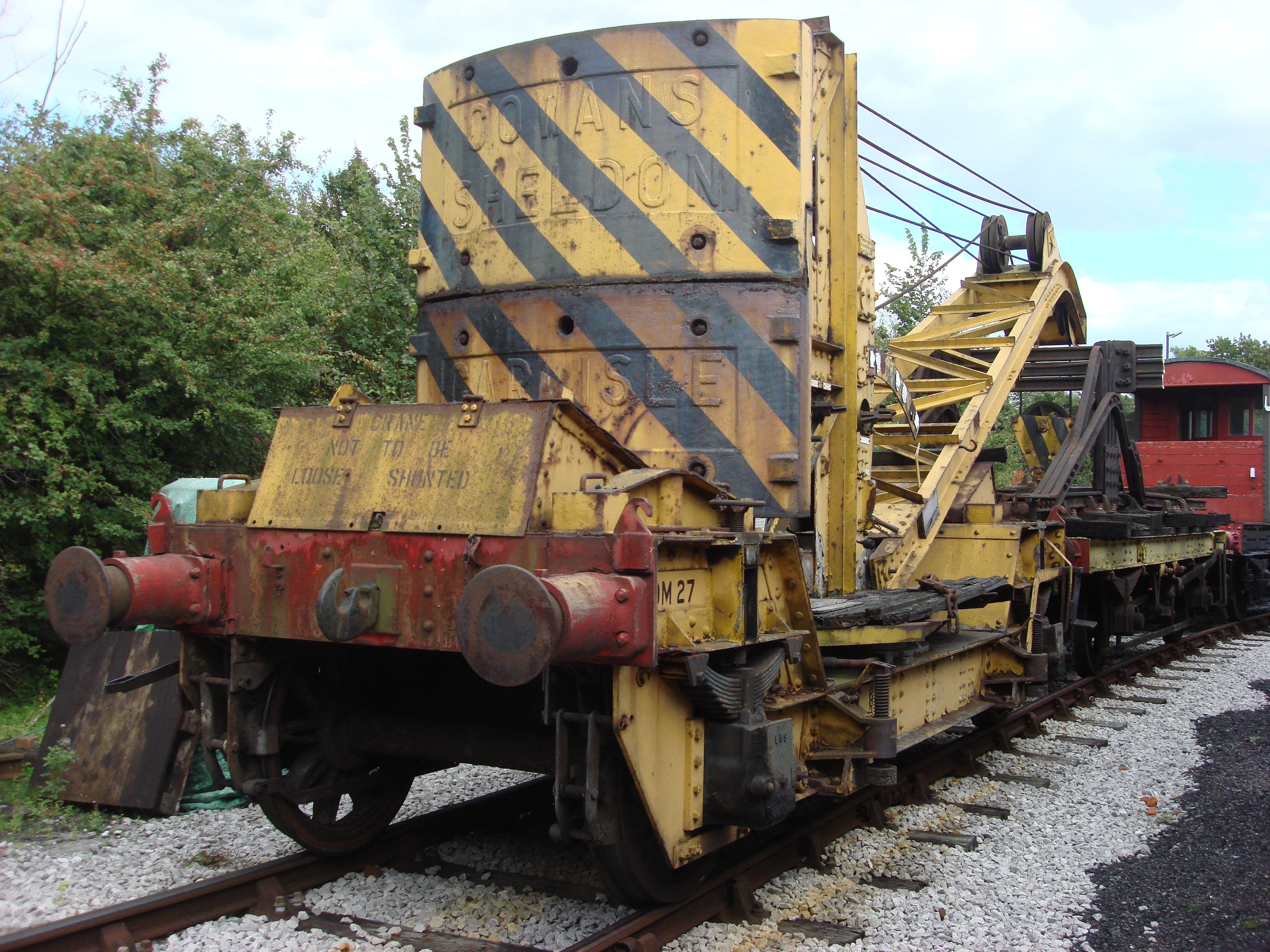breakdown crane on:
[Wikipedia]
[Google]
[Amazon]


 A railroad crane (North America: crane car or wrecker; UK: breakdown crane) is a type of crane used on a
A railroad crane (North America: crane car or wrecker; UK: breakdown crane) is a type of crane used on a
 Enter into this the steam crane and cable winch. Appearing about 1890, the cranes (the proper rail terminology is “Derrick”) increased in size, commensurate with the rise of steel
Enter into this the steam crane and cable winch. Appearing about 1890, the cranes (the proper rail terminology is “Derrick”) increased in size, commensurate with the rise of steel
 * Deutsche Maschinenbau-Aktiengesellschaft
*
* Deutsche Maschinenbau-Aktiengesellschaft
*
 *
*
* Bucyrus International, Bucyrus * Industrial Brownhoist * Link-Belt *
* Marion Power Shovel, Marion * Ohio Railroad Crane * Swingmaster Corporationbr>
* Cullen Friestedt Co (Burro), numerous successor companies later owned Burro
 *
*



 A railroad crane (North America: crane car or wrecker; UK: breakdown crane) is a type of crane used on a
A railroad crane (North America: crane car or wrecker; UK: breakdown crane) is a type of crane used on a railroad
Rail transport (also known as train transport) is a means of transport that transfers passengers and goods on wheeled vehicles running on rails, which are incorporated in tracks. In contrast to road transport, where the vehicles run on a pre ...
for one of three primary purposes: freight handling in goods yards, permanent way (PW) maintenance, and accident recovery work. Although the design differs according to the type of work, the basic configuration is similar in all cases: a rotating crane body is mounted on a sturdy chassis fitted with flanged wheels. The body supports the jib (UK; North America: boom) and provides all the lifting and operating mechanisms; on larger cranes, an operator's cabin is usually provided. The chassis is fitted with buffing (UK) and/or coupling gear to allow the crane to be moved by a locomotive, although many are also self-propelled to allow limited movement about a work site.
For cranes with a jib that extends beyond the length of the chassis, an idler car (also known as a 'jib carrier' (UK) or 'boom car' (North America)) is provided to protect the jib and to allow the crane to be coupled within a train. The idler car is usually a long, flat wagon (i.e. a flatcar
A flatcar (US) (also flat car, or flatbed) is a piece of rolling stock that consists of an open, flat deck mounted on a pair of trucks (US) or bogies (UK), one at each end containing four or six wheels. Occasionally, flat cars designed to carry ...
) that provides a means of securing the jib for transportation; storage areas for special equipment or supplies are usually fitted too. It was not uncommon for the idler car to be built on a withdrawn revenue-earning wagon, such as on the Great Western Railway after the Grouping
Grouping may refer to:
* Muenchian grouping
* Principles of grouping
* Railways Act 1921, also known as Grouping Act, a reorganisation of the British railway system
* Grouping (firearms), the pattern of multiple shots from a sidearm
See also ...
and in the 1930s (where they were referred to as 'match trucks').
Usage
Railroad cranes are usually designed specifically for one of three purposes:Goods yard cranes
Usually the smallest of the railroad cranes, goods yard cranes were used in the larger goods yards to provide lifting capability in areas away from the ground-mounted goods cranes normally provided in such yards. They were often small enough to be operated by hand, and were not normally self-propelled, instead requiring the use of a shunting engine to move them into position. Once cheap road-going mobile cranes were available, these superseded the rail-mounted variety due to their greater flexibility and mobility.Maintenance cranes
The most varied forms of crane are used for maintenance work. General purpose cranes may be used for installing signalling equipment or pointwork, for example, while more specialised types are used for track laying.Breakdown cranes
The largest cranes are used for accident recovery work, usually forming part of a breakdown train that includes staff accommodation and recovery equipment. These are large enough to lift derailed rolling stock back onto the track, although two or more cranes may be required to safely recover a locomotive.Peter Tatlow, ''Railway Breakdown Cranes: Volume 1'', Noodle Books, 2012, Peter Tatlow, ''Railway Breakdown Cranes: Volume 2'', Noodle Books, 2013, In North American terminology, a 'breakdown crane' is often referred to as a 'wrecker' and the train of which it is a part is referred to as a 'wreck train'. The members of the crew that recovers the wrecked car(s) or locomotive(s) are referred to as 'wreckers'.Construction
A railroad crane generally resembles a conventional fixed-location crane except that the platform the crane sits on is a heavy-duty reinforcedflat car
A flatcar (US) (also flat car, or flatbed) is a piece of rolling stock that consists of an open, flat deck mounted on a pair of trucks (US) or bogies (UK), one at each end containing four or six wheels. Occasionally, flat cars designed to carry ...
. Directly underneath the center of gravity
In physics, the center of mass of a distribution of mass in space (sometimes referred to as the balance point) is the unique point where the weighted relative position of the distributed mass sums to zero. This is the point to which a force ma ...
for the crane is a pivot point that allows the crane to swivel around 360°; in this way the crane can locate its boom over the worksite no matter what its location is along the track. The trucks
A truck or lorry is a motor vehicle designed to transport cargo, carry specialized payloads, or perform other utilitarian work. Trucks vary greatly in size, power, and configuration, but the vast majority feature body-on-frame construction ...
on the car under the crane will often include traction motor
A traction motor is an electric motor used for propulsion of a vehicle, such as locomotives, electric or hydrogen vehicles, elevators or electric multiple unit.
Traction motors are used in electrically powered rail vehicles ( electric multiple ...
s so that the crane is able to move itself along the track, and possibly tow additional cars.
Larger cranes may be provided with outrigger
An outrigger is a projecting structure on a boat, with specific meaning depending on types of vessel. Outriggers may also refer to legs on a wheeled vehicle that are folded out when it needs stabilization, for example on a crane that lifts ...
s to provide additional stability when lifting. Sleepers
''Sleepers'' is a 1996 American legal crime drama film written, produced, and directed by Barry Levinson, and based on Lorenzo Carcaterra's 1995 book of the same name. The film stars Kevin Bacon, Jason Patric, Brad Pitt, Robert De Niro, Dustin H ...
(ties) are often carried on the idler car to put under the outriggers to spread the weight applied to the trackbed.
Breakdown cranes (sometimes called wrecking cranes or 'big hooks') were necessary to every railroad to recover derailed rolling stock and locomotives, while also assisting with bridge building and yard construction.
History
In the early days of the railways, locomotives and rolling stock were small enough to be re-railed manually using jacks and tackle, but as they became bigger and heavier this method became inadequate. Enter into this the steam crane and cable winch. Appearing about 1890, the cranes (the proper rail terminology is “Derrick”) increased in size, commensurate with the rise of steel
Enter into this the steam crane and cable winch. Appearing about 1890, the cranes (the proper rail terminology is “Derrick”) increased in size, commensurate with the rise of steel Pullman car
In the United States, Pullman was used to refer to railroad sleeping cars that were built and operated on most U.S. railroads by the Pullman Company (founded by George Pullman) from 1867 to December 31, 1968.
Other uses
Pullman also refers to ra ...
s, so by 1910 steam cranes reached their peak of development (on the railroad). Many of these 1910-era cranes were so useful and powerful, that they remained in service until the 1980s. The combination of a quick-firing steam boiler, heavy steam winch, and cable hook could little be improved upon, and thus remained in service. Also, steam engines did not mind being parked for months, with a little care, and were ready to go to work when needed.
In the 1980s, big, hydraulic controlled diesel cranes appeared. Also, these cranes had the ability to travel on the highway so as to better able to get to the scene of an accident. They are much more mobile, and are able to manoeuvre around an accident scene, better than a crane only limited to rail access. In the United States the advent of contractors to cleanup and re-rail a line to productive status came in around the late 1970s and early 1980s. The use of caterpillar tractor mounted sidebooms (pipelayers) enabled the contractors to mobilize around a site without having the need for crane mats and multiple lifting locations.
In the 1990s a new generation of railway cranes was developed. While the conventional diesel hydraulic road cranes were adopted with some small trolleys to move on the rail track, the new generation had a professional high speed railway chassis for up to . The superstructure is also diesel hydraulic with telescopic boom and counterweight and designed to the railway's specific needs. These cranes can travel with suspended loads and keep levelled even on an elevated track, due to the automatic cant compensation. It is possible to work on one outrigger only, work with boom in horizontal position under bridges or under the overhead wires. Capacities are as high as 200 tonne
The tonne ( or ; symbol: t) is a unit of mass equal to 1000 kilograms. It is a non-SI unit accepted for use with SI. It is also referred to as a metric ton to distinguish it from the non-metric units of the short ton ( United State ...
s. It makes this new generation useful for maintenance work and switch and crossing renewal, as well as recovery work.
Manufacturers
Germany
 * Deutsche Maschinenbau-Aktiengesellschaft
*
* Deutsche Maschinenbau-Aktiengesellschaft
*Kirow Ardelt GmbH
Kirow Ardelt GmbH Eberswalde, referred to as Ardelt, is a German crane manufacturer. The company specialises in manufacturing double jib level luffing cranes which are based on the patented double jib principle. Ardelt has produced more than 4,700 ...
* Krupp Ardelt
* Leo Gottwald KG
Great Britain
 *
*Cowans, Sheldon & Company
Clarke Chapman is a British engineering firm based in Gateshead, which was formerly listed on the London Stock Exchange.
History
The company was founded in 1864 in Gateshead by William Clarke (1831–1890). In 1865 Clarke took in a partner ...
, Carlisle – cranes are labelled ''Cowans Sheldon''
*Ransomes & Rapier
Ransomes & Rapier was a major British manufacturer of railway equipment and later cranes, from 1869 to 1987. Originally an offshoot of the major engineering company Ransome's it was based at Waterside Works in Ipswich, Suffolk.
Ransome's split
...
*Thomas Smith & Sons (Rodley) Ltd
Thomas Smith & Sons manufactured steam, diesel and electric powered cranes in their Old Foundry on a narrow strip of land between Town Street in Rodley near Leeds and the Leeds and Liverpool Canal.
Early history
The history of the firm goes back ...
– cranes are labelled ''Smith Rodley'' (not "Smith & Rodley")
* Taylor & Hubbard Ltd, Leicester
* Appleby Brothers
* Craven Brothers Ltd.
* Stothert & Pitt
United States
* American Hoist and Derrick *Arva Industries
Arva Industries was founded in 1979 by Fred Smith and LaVern Eck.
The company is based in St. Thomas, Ontario, and specializes in designing and manufacturing equipment for rail, mining, military, construction and marine sectors.
In 2016, Paul S ...
* Badger Equipment Companybr>* Bucyrus International, Bucyrus * Industrial Brownhoist * Link-Belt *
Lima
Lima ( ; ), originally founded as Ciudad de Los Reyes (City of The Kings) is the capital and the largest city of Peru. It is located in the valleys of the Chillón, Rímac and Lurín Rivers, in the desert zone of the central coastal part of ...
* Little Giant Corporationbr>* Marion Power Shovel, Marion * Ohio Railroad Crane * Swingmaster Corporationbr>
* Cullen Friestedt Co (Burro), numerous successor companies later owned Burro

Russia
 *
*Kambarka Engineering Works
Kambarka Engineering Works - Full name: Open Joint Stock Company «Kambarka Engineering Works» (russian: КМЗ or ). A rolling stock manufacturer, located in the city of Kambarka ( Udmurt), Russia.
History of the Factory
Construction of an ...
* JSC "Kirovsky mashzavod 1 Maya"br>Preservation
Most heritage railways in the UK have one or more preserved railway cranes, either just as historic exhibits, or as fully functioning examples assisting with the operation of the railway. Although not normally required for re-railing activities, they are exceptionally useful for track relaying and the restoration of locomotives and rolling stock, and help to avoid expenditure on outside contractors. Three cranes of various sizes are preserved at theWestern Pacific Railroad Museum
The Western Pacific Railroad Museum (WPRM) in Portola, California, known as the Portola Railroad Museum until January 1, 2006, is a heritage railroad and archives that preserves and operates historic American railroad equipment and preserves docu ...
at Portola, California
Portola ( ) is the only incorporated city in Plumas County, California, United States. The population was 2,104 at the 2010 census, down from 2,227 at the 2000 census. Portola is located on the Middle Fork of the Feather River and was named afte ...
. They are all cranes once owned by the Western Pacific Railroad
The Western Pacific Railroad was a Class I railroad in the United States. It was formed in 1903 as an attempt to break the near-monopoly the Southern Pacific Railroad had on rail service into northern California. WP's Feather River Route dire ...
and two of them, a small, self-propelled Burro Crane and a large, 200-ton capacity Industrial Brownhoist crane, are maintained in operable condition.
All Japanese railway cranes had already retired. Road cranes are used for re-railing and maintenance works. Type "so-30" railway crane for accident recovery is preserved at Otaru synthesis museum. Type "so-80" railway crane for accident recovery is preserved at Sakuma railpark. Type "so-300" railway crane for bridge construction is preserved at Usuitouge tetsudo bunkamura.
Several breakdown cranes are preserved in the various Australian states. Examples preserved in New South Wales as X10 Class and include 1048 a 30T steam crane built by Cowans Sheldon, preserved at Rothbury. 1050 a 50T steam crane built by Craven Bros, preserved at Dorrigo. 1055 a 35T steam crane converted to diesel built by Ransome & Rapier, preserved at Canberra. 1060 a 120T steam crane converted to diesel built by Krupp Ardelt, preserved at Dorrigo. 1073 a 70T steam crane built by Craven Bros converted to diesel, preserved Richmond Main. 1080 a 50T steam crane built by Industrial Brownhoist, preserved Junee. 1081 a 50T steam crane built by Industrial Brownhoist, preserved Dorrigo.

See also
* Crane (machine) *Crane tank locomotive
A crane tank (CT) is a steam locomotive fitted with a crane for working in railway workshops, docksides, or other industrial environments. The crane may be fitted at the front, centre or rear.
The 'tank' in its name refers to water tanks mount ...
* Idler flatcars
* Rescue tactics
References
{{DEFAULTSORT:Crane (Railroad) Cranes (machines) Maintenance of way equipment